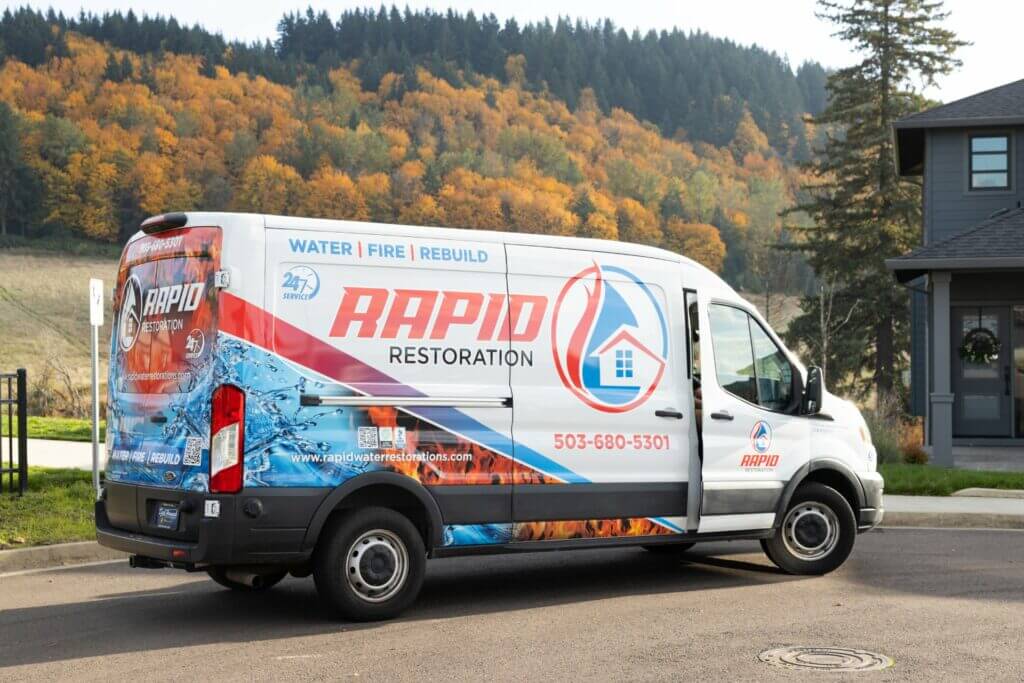“How to Clean Fire Damaged Concrete: A Comprehensive Guide”
Fire accidents can have devastating effects on concrete surfaces, leaving behind stubborn soot, smoke stains, and odor. However, with the right cleaning methods and tools, you can restore fire damaged concrete to its former glory. In this guide, we’ll delve into various techniques and strategies for cleaning fire damaged concrete effectively.
Understanding Fire Damage on Concrete Surfaces
Fire damage on concrete surfaces can manifest in various forms, including deep-seated stains, discoloration, and structural weakening. Before diving into the cleaning process, it’s essential to assess the extent of the damage thoroughly.
Assessing the Severity of Fire Damage
When assessing fire damage on concrete surfaces, consider factors such as:
- The extent of Soot and Smoke Deposits: Soot and smoke residue can adhere to concrete surfaces, causing discoloration and potentially compromising the appearance and cleanliness of the surface. Assessing the amount of soot and smoke deposits helps determine the level of cleaning required, whether it’s light cleaning, pressure washing, or chemical treatment.
- Structural Integrity: Fire can cause thermal expansion and contraction, leading to cracks, spalling (flaking or chipping), or other forms of structural damage to concrete surfaces. It’s important to thoroughly inspect the concrete for any visible signs of damage that may compromise its structural integrity. This includes checking for hairline cracks, more giant fissures, or areas where the concrete has been significantly weakened.
- Odor Penetration: Concrete is porous, which means it can absorb odors from smoke and fire. Even after visible soot and smoke residues are removed, unpleasant odors may linger if the concrete has absorbed them. Assessing the level of odor penetration helps in determining whether additional treatments, such as deodorization or sealing, are necessary to eliminate or mitigate the smell.
- Moisture Content: Fire suppression efforts often involve water or other extinguishing agents, which can saturate the concrete surface. Assessing the moisture content of the concrete is essential to prevent issues such as mold growth or further damage due to prolonged exposure to moisture.
- Surface Damage: In addition to structural damage, fire can cause surface damage to concrete, such as discoloration, efflorescence (white powdery residue), or surface deterioration. Evaluating the extent of surface damage helps in determining the appropriate repair and restoration techniques.
- Environmental Conditions: Consider ecological factors such as temperature, humidity, and exposure to sunlight, as these can affect the effectiveness of cleaning and restoration efforts.
Preparation Steps Before Cleaning
Preparatory steps must be undertaken before embarking on the cleaning process to ensure optimal results and safety.
Safety Precautions
Protective gear required
Wearing appropriate protective gear, including respirators, gloves, safety goggles, and protective clothing, is essential for safeguarding workers from potential exposure to hazardous materials and fumes while carrying out cleaning tasks. These measures not only mitigate immediate risks to health but also ensure long-term well-being by minimizing the possibility of respiratory issues, skin irritation, and other adverse effects associated with chemical exposure.
Hazardous materials awareness
In the aftermath of fire damage to concrete structures, awareness of potentially hazardous materials such as asbestos and lead is crucial due to the risk of release during the demolition or cleanup process. Strict adherence to proper handling and disposal protocols is imperative to mitigate health risks associated with exposure to these toxins effectively.
Proper ventilation
Adequate ventilation in the work area is essential for the removal of harmful fumes and the maintenance of air quality, safeguarding workers’ health and well-being. Ventilation systems not only exhaust contaminants but also ensure a constant supply of fresh air, creating a safer and more comfortable environment conducive to productivity and health.


Assessment of Damage
Inspection of the extent of fire damage
A thorough inspection is essential for comprehensively gauging the ramifications of fire damage, encompassing both the structural integrity and surface-level impacts. This meticulous assessment serves as a crucial blueprint, directing the subsequent cleaning and repair procedures to restore the affected area effectively.
Identification of structural integrity issues
Evaluating the structural integrity involves meticulous assessment to pinpoint areas where compromised stability may pose risks. Identification of cracks, spalling, and other forms of damage is crucial for determining the extent of deterioration and prioritizing necessary repairs to ensure the safety and longevity of the concrete structure.
Evaluation of surface damage
Surface damage, encompassing staining and discoloration, necessitates a thorough assessment to pinpoint the specific cleaning methods and products essential for effective restoration. This evaluation ensures the application of tailored solutions, optimizing the removal of blemishes while preserving the integrity of the surface material.
Preparing the Work Area
Clearing debris and obstructions
Prior to commencing cleaning and repair tasks, it is imperative to thoroughly clear the site of any debris, including charred materials and rubble, to facilitate safe and efficient operations. This proactive measure ensures a conducive working environment by eliminating obstacles that could impede progress or pose safety hazards.
Securing the site
To prevent unauthorized access and maintain the safety of workers and bystanders, it is essential to secure the work area using appropriate measures such as signage, barriers, and fencing. These tools help demarcate the area effectively and minimize potential risks associated with unauthorized entry or unintended interactions with hazardous materials or equipment.
Setting up equipment and tools
Equipment and tools required for cleaning and repair, such as pressure washers, scrub brushes, and patching materials, should be organized and prepared for use. Safety equipment, including fire extinguishers and first aid kits, should also be readily available.
Cleaning Process
Removing loose debris and ash
After sweeping or vacuuming away loose debris, ash, and charred materials from the concrete surface, it’s essential to ensure thorough removal to prevent any contaminants from interfering with the cleaning process. This initial step sets the stage for deeper cleaning and allows for better adherence of subsequent cleaning agents or treatments to restore the concrete’s appearance and integrity.
Pressure washing the surface.
Pressure washing proves to be highly efficient in eliminating stubborn residues and contaminants from concrete surfaces that have been damaged by fire. The force of high-pressure water jets effectively dislodges dirt, soot, and various other impurities, restoring the concrete to its pre-damaged state.
Scrubbing stubborn stains
When dealing with stubborn stains and discoloration, it may be essential to resort to scrubbing using detergent solutions or cleaners specifically formulated for the type of stain. Utilizing abrasive brushes or scrubbing pads can effectively dislodge tough stains, making them easier to remove without damaging the surface being cleaned.
Application of chemical cleaners, if necessary
When confronted with stubborn fire-related residues, specialized chemical cleaners offer targeted solutions designed to dissolve and remove such deposits effectively. However, it’s crucial to handle these cleaners with care, adhering strictly to the guidelines provided by the manufacturer to ensure safety and optimal results.
Rinsing thoroughly
Thoroughly rinsing the concrete surface with clean water post-cleaning is essential for removing any lingering cleaning agents and residues, thereby preventing streaking and ensuring a pristine finish. This diligent rinsing process effectively eliminates any potential contaminants, guaranteeing an immaculate appearance and promoting longevity in the concrete’s condition.
Repairing and Restoring
Patching cracks and holes
Repairing cracks and holes in concrete is essential to maintain structural stability and prevent future deterioration. Utilizing appropriate repair materials like epoxy compounds or concrete patching mixtures ensures effective restoration, safeguarding against potential structural compromises and extending the lifespan of the concrete surface.
Resurfacing damaged areas
When concrete surfaces suffer significant damage or exhibit irregularities, resurfacing becomes essential for both aesthetic restoration and functional integrity. This process entails applying a fresh layer of concrete or overlay material to attain a seamlessly smooth and uniform surface, thereby rejuvenating the structure’s appearance and usability.
Sealing the concrete surface
Applying a sealant to a cleaned and repaired concrete surface serves as a protective shield, effectively blocking out moisture, chemicals, and other harmful substances that could cause deterioration over time. Additionally, sealants not only safeguard the concrete but also contribute to its aesthetic appeal and overall durability, ensuring a longer lifespan for the surface.
Painting or staining, if desired
After thorough cleaning and repair, the concrete surface can be enhanced aesthetically by painting or staining. This process offers a range of color options and finishes to complement existing surroundings or achieve a desired look. These customizable options allow for flexibility in design, ensuring the concrete blends seamlessly with its environment while adding visual appeal.
Final Inspection and Safety Checks
Ensuring structural stability
Conducting a final inspection prior to concluding the project is crucial to validating the structural integrity of the repaired concrete and thereby ensuring its long-term stability. Promptly addressing any lingering issues or concerns identified during this inspection is essential to upholding safety standards and mitigating potential risks in the future.
Verifying cleanliness and aesthetics
After completing the cleaning and repair of the concrete surfaces, it is imperative to thoroughly evaluate their cleanliness and aesthetics to ensure that the desired standards have been met. Any areas that show signs of needing touch-ups or further cleaning should be promptly attended to before concluding the project to achieve satisfactory results.
Confirming safety measures are in place.
Before departing the premises, it is imperative to conduct a thorough inspection to ensure that all safety protocols, such as hazard signage, physical barriers, and personal protective equipment, are not only present but also adequately maintained. This rigorous confirmation process mitigates the risk of accidents or injuries by proactively addressing any potential safety hazards or deficiencies.
Post-Cleaning Maintenance
Regular inspections for any signs of damage
Regular inspections following cleaning and restoration are essential to monitor the concrete’s ongoing condition and promptly identify any signs of damage or deterioration that may occur over time. Taking swift action to address emerging issues ensures the concrete’s longevity and structural integrity, preventing potential hazards and costly repairs in the future.
Prompt action in case of further issues
If further damage occurs or new problems arise following the initial cleaning and repair, it’s crucial to promptly address them to minimize the impact and prevent the situation from worsening. This proactive approach may require implementing additional cleaning, conducting further repairs, or implementing reinforcement measures as deemed necessary to ensure the stability and integrity of the affected area.
Implementing preventive measures against future fire damage
Implementing preventive measures such as installing fire-resistant coatings, enhancing fire safety systems with state-of-the-art technology, and adhering to rigorous maintenance protocols not only reduces the risk of future fire damage but also ensures a safer environment for individuals and protects valuable assets from potential devastation. By proactively addressing fire safety concerns through these measures, businesses and communities can significantly mitigate the potential for catastrophic losses and uphold a higher standard of safety and security.
Effective Cleaning Methods for Fire Damaged Concrete
Cleaning fire damaged concrete requires a systematic approach and the use of appropriate cleaning agents and tools.
Pressure Washing
Pressure washing utilizes high-pressure water jets to dislodge and remove surface contaminants such as soot, smoke stains, and debris from concrete surfaces. This method is highly effective in restoring the appearance of concrete by thoroughly cleaning away superficial dirt and grime, leaving the surface looking refreshed and revitalized.


Chemical Cleaning
Chemical cleaners like alkaline degreasers and muriatic acid solutions are effective for breaking down and dissolving tough stains and residues left on fire-damaged concrete surfaces. Alkaline degreasers work by emulsifying oils and greases, while muriatic acid solutions can effectively dissolve mineral deposits and other stubborn residues, restoring the concrete’s appearance and integrity.
Dry Ice Blasting
Dry ice blasting is a non-abrasive cleaning method that involves propelling dry ice pellets at high speeds using compressed air, effectively dislodging and removing contaminants such as soot and smoke from concrete surfaces. Unlike traditional methods like sandblasting or chemical cleaning, dry ice blasting doesn’t leave behind secondary waste or cause damage to the concrete substrate, making it an environmentally friendly and gentle solution for surface restoration.
Restoration Techniques for Deep-Seated Damage
In cases of severe fire damage, deeper cleaning and restoration techniques may be necessary to revive the concrete surface.
Sandblasting
Sandblasting is a process that utilizes the high-velocity projection of abrasive materials like sand or garnet onto surfaces to eliminate surface contaminants and restore the original appearance of concrete. This method effectively strips away dirt, paint, rust, or other unwanted substances, leaving behind a clean and smooth surface ready for further treatment or application.
Chemical Etching
Chemical etching involves applying acidic solutions to the concrete surface. This effectively breaks down and dissolves stubborn stains and discoloration, particularly those resulting from fire damage. This process helps restore the appearance of the concrete by removing the affected layers, revealing a cleaner and more uniform surface underneath.
FAQs (Frequently Asked Questions)
How long does it take to clean fire damaged concrete?
The duration of the cleaning depends on the extent of the damage and the chosen cleaning method. Simple cleaning tasks may take a few hours, while more complex restoration projects can span several days.
Can I clean fire damaged concrete myself, or should I hire professionals?
While minor cleaning tasks can be tackled DIY-style, extensive fire damage may require professional expertise to ensure thorough cleaning and restoration without causing further damage to the concrete surface.
Is pressure washing safe for all types of concrete surfaces?
Pressure washing is generally safe for most concrete surfaces, but it’s essential to adjust the pressure and nozzle settings according to the surface’s condition to prevent damage.
How can I prevent fire damage to concrete surfaces in the future?
To minimize the risk of fire damage, implement preventive measures such as installing fire-resistant coatings, maintaining fire extinguishers, and practicing proper fire safety protocols.
What are some eco-friendly cleaning alternatives for fire damaged concrete?
For environmentally-conscious individuals, eco-friendly cleaning solutions such as vinegar, baking soda, and hydrogen peroxide can be effective in removing light to moderate fire damage from concrete surfaces.
Can fire damaged concrete be salvaged, or is replacement necessary?
In many cases, fire damaged concrete can be salvaged through thorough cleaning and restoration techniques. However, if the damage is extensive or structural, replacement may be the most viable option.
Conclusion
Cleaning fire damaged concrete requires patience, diligence, and the right tools and techniques. By following the guidelines outlined in this comprehensive guide, you can effectively restore fire-scorched concrete surfaces to their former beauty. Remember to prioritize safety precautions and consult professionals for complex restoration projects.

